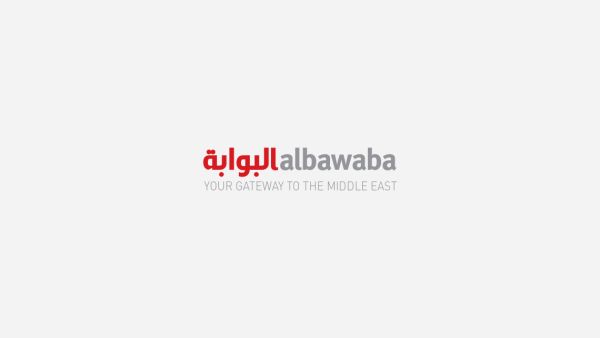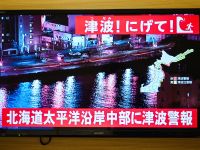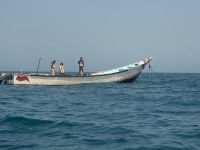OVERVIEW
Proven Oil Reserves (1/1/99): 262.1 million barrels
Natural Gas Reserves (1/1/99): 3 trillion cubic feet (tcf)
Electricity Generation (1997E): 1.32 billion kilowatthours (kwh)
OIL AND GAS INDUSTRIES
Major Oil Fields (Production - bbl/d, 1999E): Adar (10,000), Heglig/Unity (136,000, Sept. 1999)
Oil Refineries (Capacity - bbl/d): Port Sudan (21,700 bbl/d), El Obeid (10,000 bbl/d)
Major Foreign Oil Company Involvement: Agip, China National Petroleum Corp. (CNPC), Gulf Petroleum Corp., (GPC), Lundin Oil Corp., Mobil, National Iranian Gas Company (NIGC), OMV, Petronas, Royal Dutch/Shell, Talisman Energy, Total
Sudan became a net oil exporter of crude oil in August 1999 from the specially-built Beshair terminal near Port Sudan which is linked to oilfields in southern Sudan by a 1,610 km (1,000 mile) pipeline. The pipeline from the oil fields of the Muglad Basin in southern Sudan to an export terminal on the Red Sea.
However the country has a vast oil and gas potential, but is practically split by civil war—a fact that effectively blocks or at least make it very difficult to explore or develop the oil as well as natural gas sector.
OIL
Petroleum exploration in Sudan began in the early 1960's. on e of the main oil groups in the world , ENI has presence in Sudan that is dated back to 1959 when AgipPetroli established AgipSudan Ltd, a company which operated a network of about 60 service stations, 2 depots and three LPG filling plants. In 1999 Agip Petroli sold Agip Sudan Ltd.
Another important company was Chevron which concentrated offshore in the Red Sea. The only significant offshore discovery was Chevron's Suakin gas discovery in 1976. Chevron's exploration in the 1960's and 1970's led to several oil finds in southern Sudan near the towns of Bentiu, Malakal and Muglad.
Chevron abandoned its concessions in Sudan in 1985, due to their location in an area where fighting was taking place between government and rebel forces. Total also suspended its onshore exploration activities, but retained the rights to its concessions. The Sudanese government sub-divided Chevron's concessions into smaller exploration blocks, and Canadian independent Arakis Energy (Arakis) acquired the portion of Chevron's concession north of the town of Bentiu in 1993.
Greater Nile Oil Project :
Despite heavy fighting around Sudan’s major oil fields in the Western Upper Nile region, this year the oil kept flowing according to the oil producers. Talisman holds a 25 percent stake in oil project that is currently producing about 185,000 barrels a day. Its partners in the oil project, which is located in the in the Heglig region,include China National Petroleum Corp., the Malaysian state oil company Petronas, and the Sudanese government. The oil is shipped via a pipeline to the Red Sea. It has been the target of sabotage on a handful of occasions since it was first used late last year.
Sudan has stepped up its exploration and production sharing agreements with a number of foreign firms to raise its output.
The project was initiated by Arakis, which began development of the Heglig and Unity fields within its concessions, and started production on a small scale (around 2,000 barrels per day -- bbl/d) in 1996, which was processed and consumed within Sudan. The remote location of the field, aproximately 1610 km from the Red Sea coast, meant that it would require a very substantial capital investment to transport the oil to a seaport.
To attract the necessary capital and spread the risks, Arakis entered into a consortium with three other firms in December 1996. The Greater Nile Petroleum Operating Company (GNPOC) consisted of the China National Petroleum Corporation (CNPC)(40 percent), Petronas of Malaysia (30 percent), Sudanese national firm Sudapet (5 percent), and Arakis (25 percent, and the field operator).
Construction on the pipeline from the fields to an export terminal near Port Sudan began in May 1998 on an accelerated schedule. The pipeline was designed for an initial capacity of 150,000 bbl/d in 1999, to be expanded to 250,000 bbl/d in 2000. Contracts were awarded to the China Petroleum Development and Technology Corporation and the German firm Mannesman for construction of the pipeline.
Arakis' involvement in Sudan, even after the formation of the GNPOC consortium raised $700 million, was still hindered by a lack of capital. U.S. sanctions against Sudan prevented investment in the project by U.S. corporations and persons, and the high-risk nature of investment in Sudan also had an effect. In the end, Arakis agreed to be purchased by another Canadian independent, Calgary-based Talisman Energy, for $277 million in Talisman stock, in October 1998.
The Talisman acquisition provided an infusion of capital which allowed the project to be completed on schedule in 1999. In July 1999, the pipeline began filling with crude, and the first cargo of "Nile Blend" departed the export terminal in early September 1999.
Recoverable reserves from the Heglig and Unity fields have been estimated at 660 million to 1.2 billion barrels. The area around these two fields also is suspected to contain oil, but estimates of reserves vary. Chevron had made a rough estimate of 10 billion barrels in the early 1980's. Talisman has cited a range of 8.5 to 12.5 billion barrels.
The Swedish firm, Lundin Oil, reported a discovery in the adjacent Block 5A in May 1999. Petronas, the Austrian firm OMV, and Sudapet have minority stakes in the block. (Production tests of the well have been delayed until the end of 1999, but Lundin characterized the find as "substantial.") Qatar's Gulf Petroleum Corporation (GPC) is producing 10,000 bbl/d from the Adar field, while CNPC also holds another concession in southern Sudan, Block 6. Near-term production of 150,000 bbl/d from GNPOC holdings would leave an additional 100,000 bbl/d in pipeline capacity available for production by other parties in adjacent concessions. Sudanese officials have stated that the pipeline is capable of being expanded to a capacity of 450,000 bbl/d with the addition of new pumping stations.
Petronas greater Nile oil project:
Malaysia's national oil firm Petronas has been allocated at least a 40 percent stake in an oil exploration and production project in southern Sudan. Petrolian Nasional Bhd. (Petronas) is expected to become the main operator of a new site known as Block 5B.
Petronas will be the operator of this project and hope to finish negotiations by January and mobilise the project in the next six months . The amount of investment from Petronas in the Block 5B operation has yet to be decided but was expected to run into billions of ringgit.
Petronas has joint investments in other oil projects in Sudan. It holds a 30 percent stake in the Greater Nile Petroleum Operating Company (GNPOC) which is exploring and developing Blocks 1, 2 and 4 in south Sudan.
In the GNPOC ventures, Petronas' three partners are China National Petroleum Corp. which has a 40 percent stake, Talisman Energy Corp. with 25 percent and Sudan's national oil company Sudapet Ltd. with 5 percent.
Petronas has invested about $800 million in petroleum exploration and production in Sudan, said to be its largest single overseas investment so far.Petronas country manager Omar Suhaimi Abu Hassan was quoted as saying high oil prices would help the company recoup its investment in Sudan earlier than expected. Instead of the normal six to seven years, the recovery period could be shortened by at least two to three years if high oil prices prevailed.
GNPOC project has recovered 620 million barrels of oil, and was in the midst of exploring and discovering another 330 million barrels. Blocks 1, 2 and 4 under the GNPOC exploration project are believed to contain combined reserves of some 2.8 billion barrels, the report added.
REFINING AND DOWNSTREAM
Sudan has two refineries, with the largest in Port Sudan. The Port Sudan facility has a capacity of 21,700 bbl/d. A petroleum products pipeline runs from the Port Sudan refinery to Khartoum. A smaller facility located in central Sudan near El Obeid has a capacity of 10,000 bbl/d. Additional refining facilities are being developed. Construction of a 50,000-bbl/d refinery located north of Khartoum began in May 1998.
The refinery, which is being built with assistance from CNPC, is expected to be operational by mid-2000, and will use crude oil from the GNPOC pipeline. It is expected to save the Sudanese government over $100 million per year in refined product imports.
ENGINEERING & OILFIELD SERVICES
In that sector, Snamprogetti carried out the engineering and construction of the Unity and Heglig Oil Fields Production Facilities and pipeline in 1986.
Saipem, in a joint venture, with an international engineering company, is carrying out a turnkey contract for the Muglad Basin Oil Development project, providing for the construction of seven pumping stations, a marine terminal including five storage tanks, and an offshore line with a loading buoy.
BUTANE
Sudan began exporting butane gas in 2000 , with an initial shipment of 3,600 tons leaving Port Sudan. A Chinese-built refinery is producing 550 tons of butane gas a day while the country consumes 130 tons a day.
The surplus gas is being exported by local oil companies, adding that his ministry is planning to build a gas-fuelled power house that yields 200 megawatts of electricity. The refinery built by China National Petroleum Corp. (CNPC) in 19 months was inaugurated in June.
Sources:
2. United States Energy Information Administration. (Please Note: The US/D.O.E.Information contained in this report is accurate as of November 1999.)
© 2000 Mena Report (www.menareport.com)







